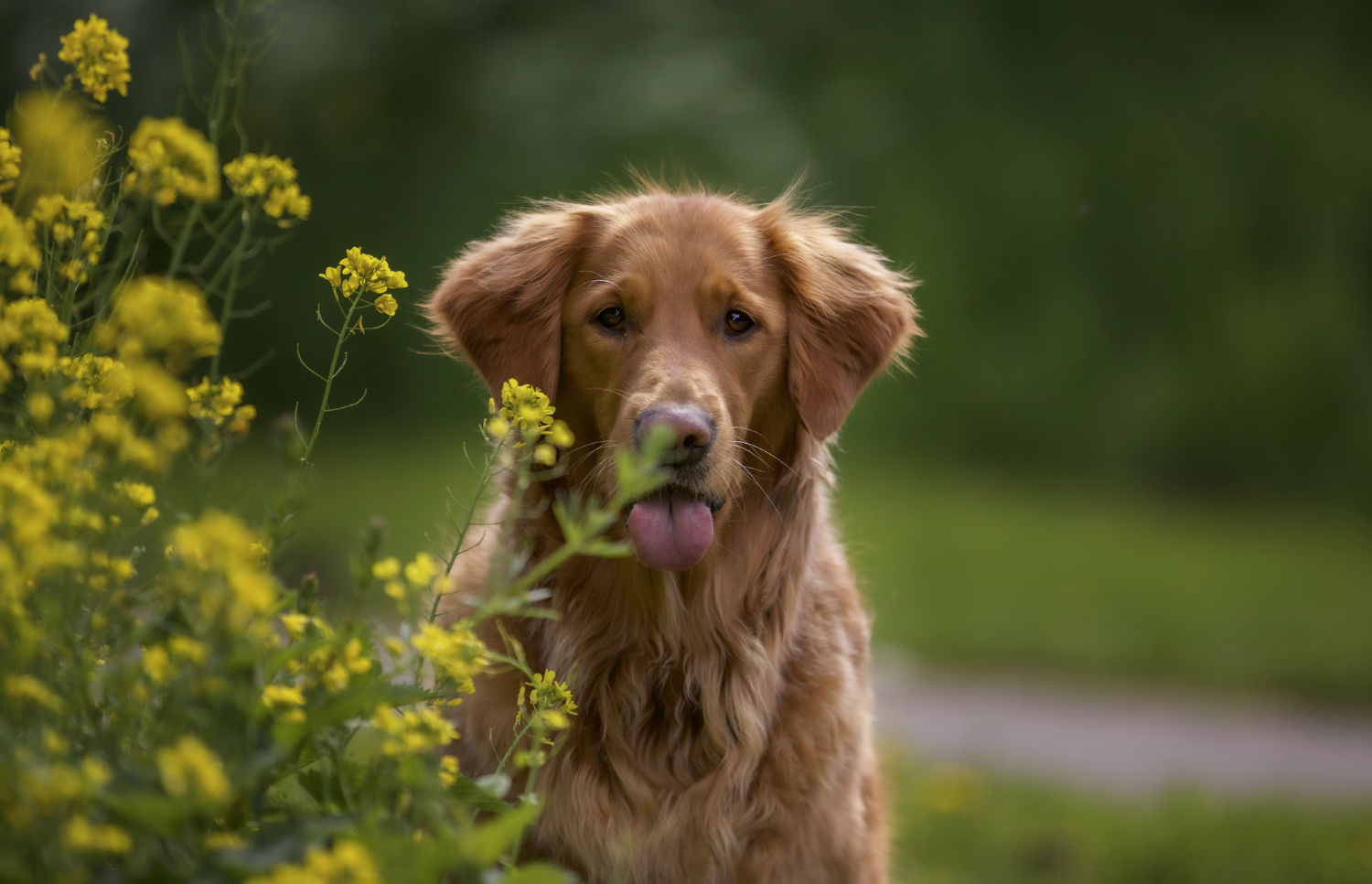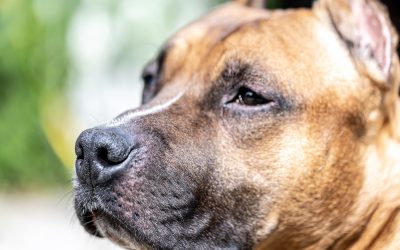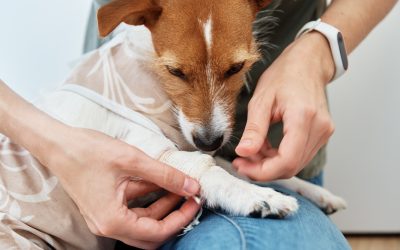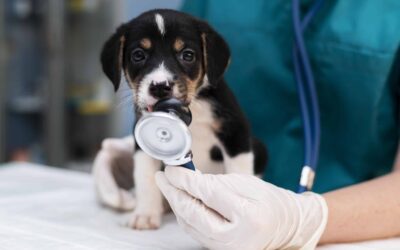My Dog Ate a Bee or Wasp: What Should I Do?

Dogs are naturally curious creatures, and their playful exploration sometimes leads them into encounters with insects like bees and wasps. While these encounters are often harmless, they can sometimes result in stings that cause discomfort or even serious reactions. Knowing how to identify and respond to bee and wasp stings is crucial for any dog owner.
Understanding Bee and Wasp Stings in Dogs: Signs and Symptoms
Before we dive into the steps you should take when your dog eats a bee, let’s first understand the signs and symptoms of bee and wasp stings in dogs. Recognizing these signs can help you assess the severity of the situation and determine the appropriate course of action. Common signs and symptoms of bee and wasp stings in dogs include:
- Localized Swelling: Swelling at the sting site is the most common symptom. It can vary in size depending on the severity of the sting and the dog’s reaction.
- Redness and Inflammation: The area around the sting may become red and inflamed.
- Pain and Discomfort: The dog may exhibit signs of pain such as whining, limping, licking, or chewing at the sting site. They may also paw frantically at their face if stung there.
- Hives: Raised, red bumps or welts (hives) may appear on the dog’s skin, especially if the dog has an allergic reaction.
- Itching: The dog may scratch or chew at the sting site due to itching.
- Lethargy: Some dogs may become unusually tired or lethargic following a sting.
- Drooling: Excessive drooling can occur, especially if the sting is in or around the mouth. The dog may also smack their lips.
- Retching: The dog may retch or appear nauseous.
- Whining and Panting: The dog may whine and pant due to discomfort or pain.
- Reacting Loudly: The dog might react loudly or yelp when stung.
More serious symptoms associated with multiple stings or allergic reactions include:
- Difficulty Breathing: This is a severe symptom indicating a possible anaphylactic reaction. It includes rapid breathing, wheezing, or gasping for air.
- Pale Gums: Pale gums can indicate shock or anaphylactic reaction and require immediate veterinary attention.
- Vomiting and Diarrhea: Gastrointestinal symptoms can occur, particularly in severe allergic reactions.
- Drowsiness and Disorientation: If the sting causes a significant allergic reaction, the dog may seem weak, drowsy, or disoriented.
- Collapse: In extreme cases, the dog may collapse due to a severe allergic reaction.
- Seizures: Seizures are a very serious sign that requires immediate veterinary attention.
- Swelling in or Around the Mouth: Swelling in or around the mouth can interfere with breathing and is a sign of a severe reaction.
Immediate Actions: What to Do When Your Dog Eats a Bee or a Wasp
If you witness your dog eating a bee or a wasp and suspect they have been stung, it’s crucial to act quickly and calmly. Here are the steps you should take:
1. Locate the Sting Site
Carefully inspect your dog’s mouth, face, and body for any signs of swelling or the stinger itself. If you find the stinger, remove it by gently scraping it away with a firm object like a credit card or tweezers. Avoid squeezing the stinger, as this can release more venom into your dog’s system.
2. Provide Relief
Once the stinger is removed (if present), you can help alleviate your dog’s discomfort by offering a cold compress or ice pack wrapped in a towel. Apply it to the affected area for 10-15 minutes to reduce swelling and pain.
3. Monitor for Breathing Difficulties
Keep a close eye on your dog’s breathing patterns. If you notice any labored breathing, wheezing, or excessive panting, it could be a sign of an allergic reaction, and you should seek veterinary care immediately.
4. Consult with Your Vet
If your dog has been prescribed antihistamines previously, consult with your vet about administering them. They can help alleviate potential allergic reactions. Always seek veterinary advice before giving any medication to your pet.
When to Seek Veterinary Care: Signs of an Allergic Reaction
While most bee stings in dogs are not life-threatening, it’s crucial to recognize the signs of a severe allergic reaction and seek immediate veterinary care. Here are some warning signs to watch out for:
- Difficulty breathing or wheezing
- Excessive swelling of the face, throat, or tongue
- Vomiting or diarrhea
- Collapse or loss of consciousness
- Pale gums or tongue (a sign of shock)
If you notice any of these symptoms, do not hesitate to contact your veterinarian or the nearest emergency animal clinic. Allergic reactions can be life-threatening and require prompt medical attention.
Preventing Bee Stings in Dogs: Tips for a Bee-Safe Environment
While it’s impossible to eliminate all risks, there are several steps you can take to create a bee-safe environment for your furry friend:
- Keep Trash Cans Covered: Bees are attracted to sweet and sugary substances, so keeping your trash cans securely covered can help prevent bees from swarming around them.
- Avoid Leaving Food or Drinks Outdoors: Any leftover food or sugary drinks can attract bees, increasing the risk of stings.
- Plant Bee-Friendly Flowers: While it may seem counterintuitive, planting bee-friendly flowers in designated areas can help keep bees away from areas where your dog plays or spends time.
- Use Citronella or Lemongrass: These natural repellents can help deter bees from specific areas without causing harm to the insects.
- Supervise Your Dog Outdoors: Keeping a watchful eye on your dog when they’re outside can help you intervene quickly if they become interested in a bee or insect.
Why Dogs Eat Bees: Causes and Prevention
While it may seem perplexing, there are several reasons why dogs might be tempted to eat bees:
- Curiosity: Dogs are naturally curious creatures, and their inquisitive nature might lead them to investigate and potentially consume insects like bees.
- Hunting Instinct: For some dogs, especially those with a strong prey drive, the buzzing and movement of bees can trigger their hunting instincts, leading them to chase and potentially ingest the insects.
- Accidental Ingestion: Sometimes, dogs may accidentally inhale or swallow a bee while playing or sniffing around outdoors.
To prevent your dog from eating bees:
- Teach your dog the “leave it” command and reinforce it consistently. This can help curb their curiosity and prevent them from investigating or consuming bees.
- Providing ample physical and mental exercise can help redirect their hunting instincts and reduce their urge to chase or consume insects.
- Keep a watchful eye on your dog when they’re outdoors can help you intervene quickly if they become interested in a bee or insect.
Other Insect-Related Dangers for Dogs: Awareness and Precautions
While bee stings are a common concern, other insect-related dangers can also pose risks to your dog’s health and well-being:
- Ant Bites: Fire ants and other aggressive ant species can deliver painful bites that may cause swelling, redness, and discomfort in dogs.
- Spider Bites: Certain spider species, such as black widows or brown recluses, can deliver venomous bites that can be dangerous to dogs.
- Wasp and Hornet Stings: Like bees, wasps and hornets can sting dogs, potentially causing severe reactions or even anaphylaxis in some cases.
- Insect-Borne Diseases: Mosquitoes, ticks, and fleas can transmit diseases like Lyme disease and heartworm, which can harm your dog’s health.
To protect your furry friend from these insect-related dangers, it’s essential to:
- Use appropriate insect repellents and preventative medications as recommended by your veterinarian.
- Ensure your pet is up to date with their vaccination schedule
- Regularly check your dog for ticks or other pests after outdoor activities.
- Be cautious when exploring areas with potential insect nests or hives.
- Seek prompt veterinary attention if you suspect your dog has been bitten or stung by a potentially venomous insect.




